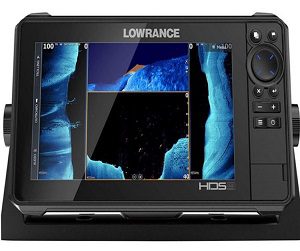 The active track is the fish finders feature that allows users to record their tracks and paths. The energetic track is like an electronic breadcrumb so that you do not keep circling around at the same point. The tracks can also be recorded, and the display of the current track is known as the active track.
The active track is the fish finders feature that allows users to record their tracks and paths. The energetic track is like an electronic breadcrumb so that you do not keep circling around at the same point. The tracks can also be recorded, and the display of the current track is known as the active track.
There are various advantages of an energetic track, and it can be used to do large scanning with accuracy. The tracks can also be saved for later use, and it is an excellent way to have an idea about the journey.
In this article, we are going to learn how to use the active track on fish finders, so let’s start.
Table of Contents
How Can I Use The Active Track On Fishfinder?
The process of turning on the active track on the fish finder is straightforward and does not require understanding the complex settings. First, the user needs to go to Info and select the user data. The track option is in user data that can be easily found.
There are options for Active Tracks in the tracks, and to turn on the active track, the user must select this option, when selecting this option three other options will open. These options are:
- Track Color
- Record Mode
- Interval
The track color option enables the user to set the color of the track lines. The record mode has three options, and the user can select one of them. These options are Off, Fill, and Wrap. The off chance is to stop all the active track recordings. The fill option records the active track and will stop the recording when the memory is occupied, and the user must have to delete the unwanted tracklogs manually. The wrap track continuously records the active track and will start to overwrite them on the oldest tracklogs when the memory is occupied.
These Are Things That The User Should Adjust Before Starting The Active Track
Interval: The memory of the system is limited, and the interval has its parts in that. If the intervals are set at a short distance, it will use the memory quickly, and if they are too far away, the active track will be inaccurate.
Time: It is the time after which the system marks the track point.
Resolution: It is the amount of allowed error that the user can ignore. More decimal places are required for more accurate markings, and they use memory. The digits after decimals have minimum effects on reading, and they can be ignored sometimes to save the memory.
How To Save Active Track On Fish Finder?
The recorded active tracks can be saved to the internal memory of the fish finder for later use. The process of keeping track is so easy. The user has to go to Info, select User Data, Tracks, and save active tracks. The tracks are usually protected with anime of time and date of the day they were recorded, but the user can change them and save them with the names they like.
How To Clear Active Track On Fish Finder?
The internal memory of the fish finders is not too much and can be quickly occupied. Clearing the old and unwanted active track records is the best way to make space for recording new active tracks. The user has to go to Info, select user data, and then track and Clear Active Track in this option to remove the tracks. A confirmation message will appear asking to delete all the records. If the user does not want to delete all the data, they can manually delete the active tracks.
How To Follow Active Track On Fish Finder?
The process of following the previously recorded track is also easy, and the user can select any track to follow. The user must go to Info Button > User Data > Tracks > Follow Active Track and select the track they want to follow.
Conclusion
Active tracks are great options when it comes to navigation. They can be used to remember the path taken to be utilized later. They are also used to have an idea about the scanning so that no area is missed or overlapped.
- What Do You Need for Fishing - August 18, 2022
- How to Find Offshore Fishing Spots - August 18, 2022
- What to Use for Trout Fishing - August 17, 2022
